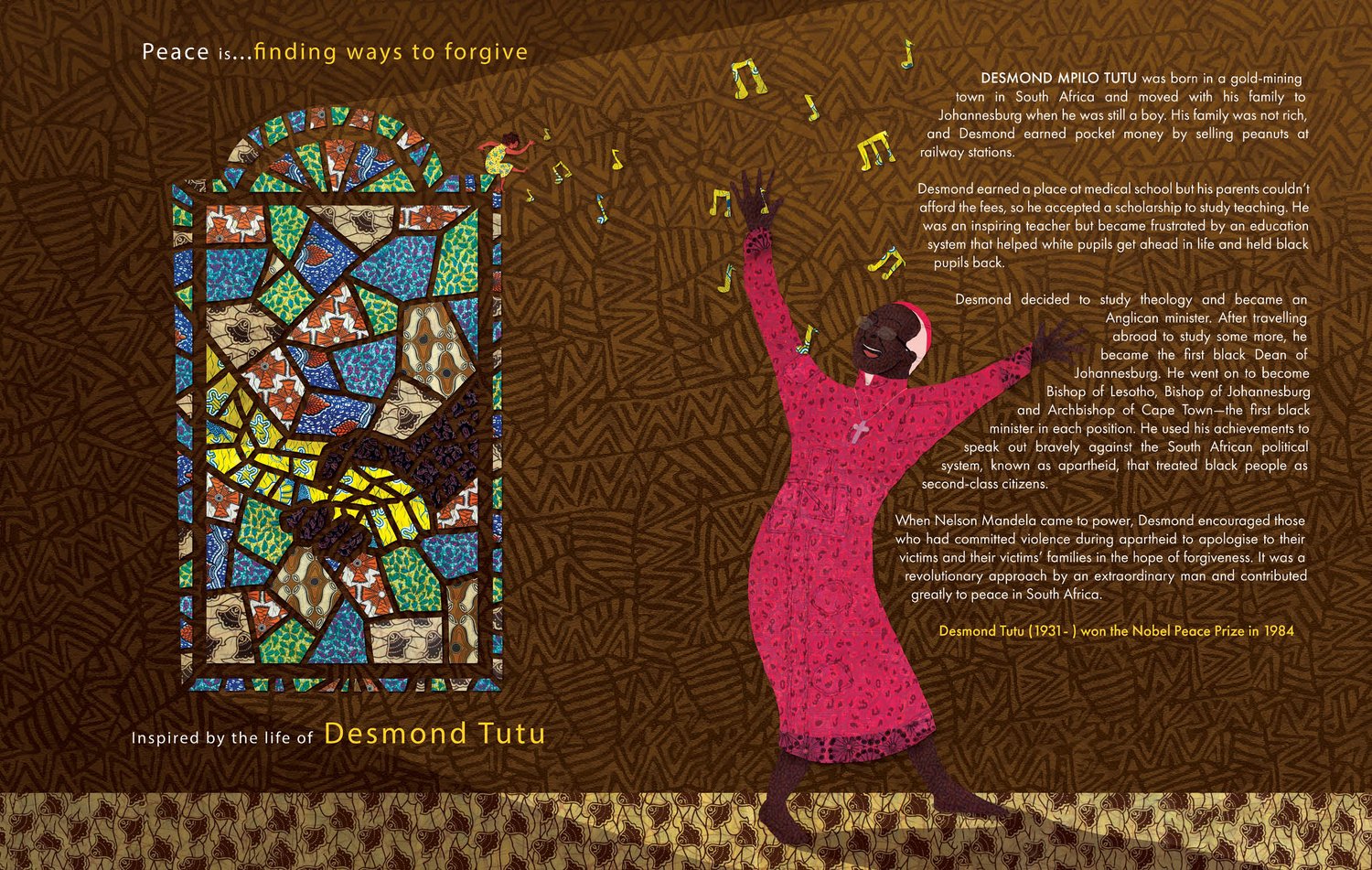
The International Day of Peace, celebrated each year on September 21, is a United Nations initiative. This year also marks the 75th anniversary of the signing of the Universal Declaration of Human Rights (in December) and also the United Nations members’ ratification of their obligations under the Genocide Convention. While all of these may sound like very adult topics, children are among the largest group of humans to suffer when peace fails, to have their human rights overlooked, and to face state-sponsored mass eradication. We need to celebrate, with children, the keeping of peace, and discuss the importance of human rights for themselves and for everyone with whom they share this world, regardless of status.

What books can we share to raise peace awareness in our families and classrooms? Lantana Publishing has provided a perfect starting place with Peace and Me, a picture book anthology by Ali Winter and illustrated by Mickaël El Fathi. Here we meet a broad collection of Nobel Peace Prize Laureates in page spreads featuring a brief biography of each along with imagery inspired by their lives and peace work. This is both an excellent first look to the lives of Desmond Tutu, Malala Yousafzai, and many others of different ages and stages of life when they became renowned peace activists, as well as a fine launching pad for discussions of the critical—and unpeaceful—situations each faced that inspired them to act. Peace awareness requires conscious attention to what is required to invoke peace and to maintain it and these leaders show the many paths to peace that need to maintained.
A picture book biography detailing the work of one individual rights activist is from Creston Books. No Steps Behind: Beate Sirota Gordon’s Battle for Women’s Rights in Japan, by Jeff Gottesfeld and illustrated by Shiella Witanto, introduces the woman who helped to make equality for women a legal reality in mid-20th-century Japan by crafting a clause that was to be included in the national constitution, This 2020 Freeman Award winner gives age-accessible context for understanding how legal documentation, like a national constitution, can play an important part in securing peace and social justice for many who live in a culture or society under that document’s purview.


For younger explorers of the nuances of peace, Linda Ragsdale, also known as the Peace Dragon Lady, offers an array of avenues to share with children. Her stories explore the concept of peace through specific concrete elements to which this broad term applies. Visit her site to find projects for home and classroom peace activities. You can find her story books at Flowerpot Press as a series called Peace Dragon Tales.

Books for the young can help us model what peace feels like at a personal level by invoking this surprisingly complex feeling. Yellow Butterfly by Ukrainian artist Oleksandr Shatokhin and published by Red Comet Press, offers a wordless story filled with accessible metaphors to lead young (and older) readers through the senses aroused by war, hope, and possible peace. Well-suited to sharing one on one, or as a book to study and discuss in groups, this one inspires the sense of peace that derives from the experience of its opposite, war.
The life of a refugee child usually is chaotic in the present as well as shaded by the trauma of what they have been able to escape. My Beautiful Birds, by Suzanne Del Rizzo with her fabulous polymer modelled illustrations, published by Pajama Press, takes young readers into the life of a young Syrian refugee child who takes heart—and emotional guidance—from birds who happen to land in the refugee camp. Here, again, the fact of war is the contrast agent for the hope and work toward peace, extending the hope into the next step: healing.
Peace is not achieved passively. How will the children in your life find ways to make it a daily reality as they mature into the next generation to assure it? You can encourage the chanes of peace building by showing them models, though books and stories, of the issues and creative solutions possible and ask them to share their own.